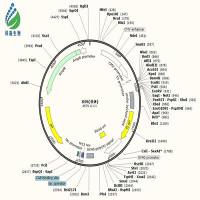Biosensor-Based Evaluation of Liposomal Binding Behavior
互联网
594
Biosensors can be regarded as analytical devices that transform biologically given facts, such as the appearance of physiological substrates, or biological recognition processes of ligands and receptors into detectable signals without the need of further labeling. This chapter introduces acoustic wave sensors as mass-sensitive tools to investigate the liposomal binding behavior onto simulated biological surfaces. These sensors do not only allow for quantification of the liposomal binding intensity, but further analytical readings give insight into the liposomal appearance at the binding site, e.g., deformation or fusion. Since the liposomal behavior at the target binding site might have strong impact on therapeutic effects, a prediction of liposomal appearance and a controlled modulation thereof appear possible with the help of biosensors.
Here, the function of a quartz crystal microbalance (QCM) and the bio-functionalization of quartz sensors are reported for a series of liposomal binding experiments. Liposomes containing biotin as model ligands were selected to evaluate their binding to avidin-modified sensors. The data, representing binding intensity and liposome deformation, are explained with respect to the role of binding strength and lipid composition for liposomal behavior.









